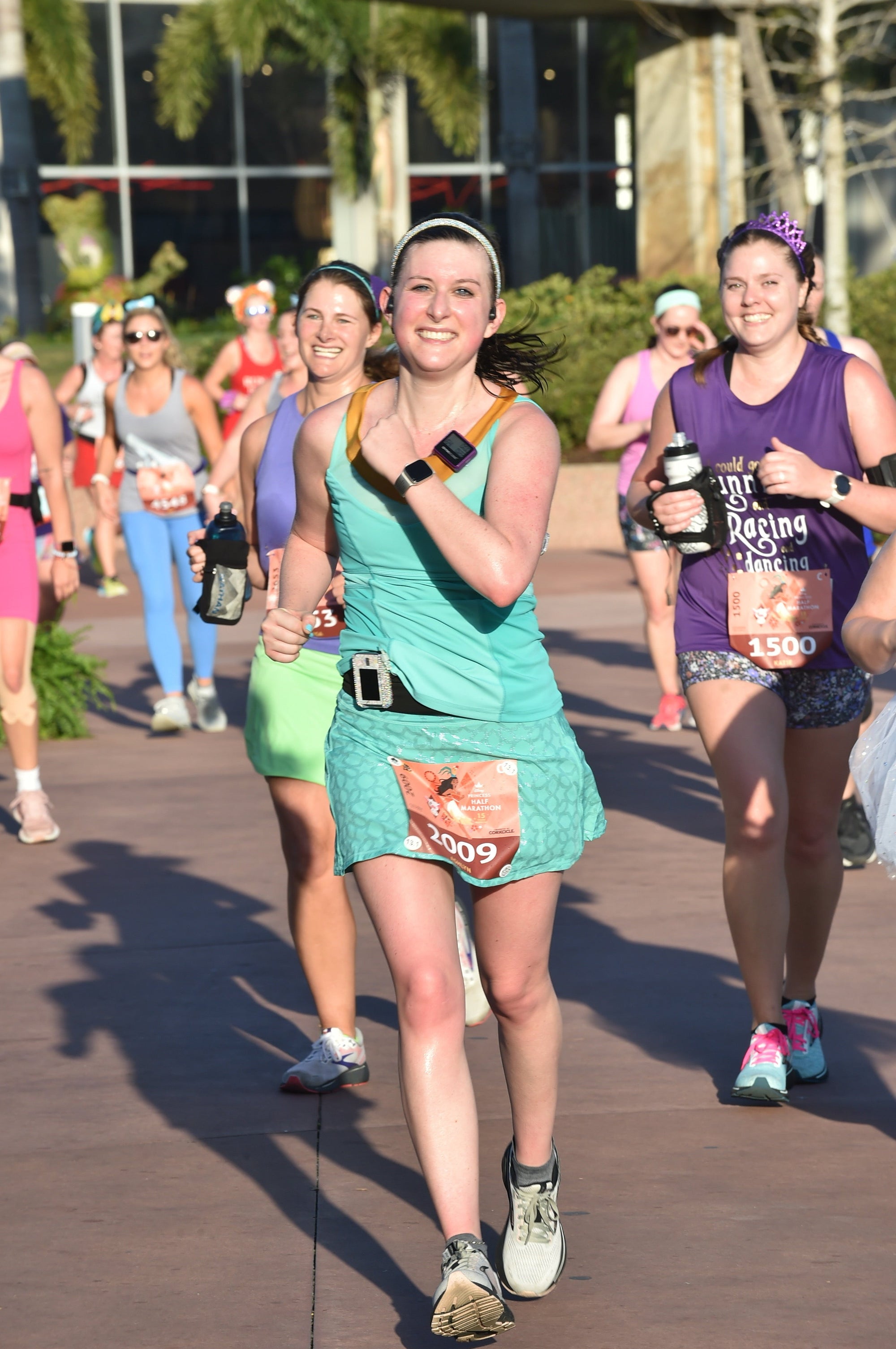

· By Ashlyn Mills
Running a Half Marathon with T1D: When it ALL Goes Wrong
As a person with type 1 diabetes, I know that managing blood sugar levels can be a challenging task, especially during long-distance races like the Disney Princess Half Marathon. Despite my best efforts, my continuous glucose monitor (CGM) stopped working before the race, leaving me feeling lost and uncertain and leaving my family very worried about my wellbeing.
Before the race began, I suspended my pump for 1 hour and ate an apple sauce. I decided at that point that I would rather have high blood sugar during a 13 mile run than low blood sugar so this was the best way I could figure to achieve that.
I knew that I needed to keep track of my blood sugar levels to prevent any potential complications, but without the real-time data from my CGM, I had to resort to manual checks. I stopped at a medical tent at mile one to check my blood sugar (which was 102), but I realized that stopping too frequently would negatively impact my race time, so I chose to keep going without checking my levels as frequently as I should have.
Despite the challenges I faced, I eventually crossed the finish line, but my race time was impacted. Looking back, I realized that I should have had a glucometer with me during the race as a backup plan in case my CGM malfunctioned. Glucometers are small devices that are easy to carry and though we are so accustomed to CGM, glucometers are extremely important, especially in a time like this.
Not having a glucometer with me during the race put me at risk of experiencing high or low blood sugar levels, which can have serious consequences, including loss of consciousness or even coma. Fortunately, I was able to finish the race without any major incidents, but it was a valuable lesson for me and anyone else managing diabetes while running races.
It's important to always be prepared when running races with type 1 diabetes. This means having a backup plan in case of CGM malfunctions or other unexpected events. A glucometer is an essential tool to have on hand during races.
In addition to carrying a glucometer, it's also essential to have a plan in place for managing blood sugar levels during the race. This includes properly fueling before and during the race, adjusting insulin doses as needed, and taking breaks to check blood sugar levels when necessary.
As someone who loves running and managing type 1 diabetes, I know that it's possible to overcome the challenges of both. With the right tools, preparation, and support, it's possible to successfully complete races and manage diabetes at the same time. So, always remember to pack a glucometer for your next race and prioritize your health and safety above all else.
